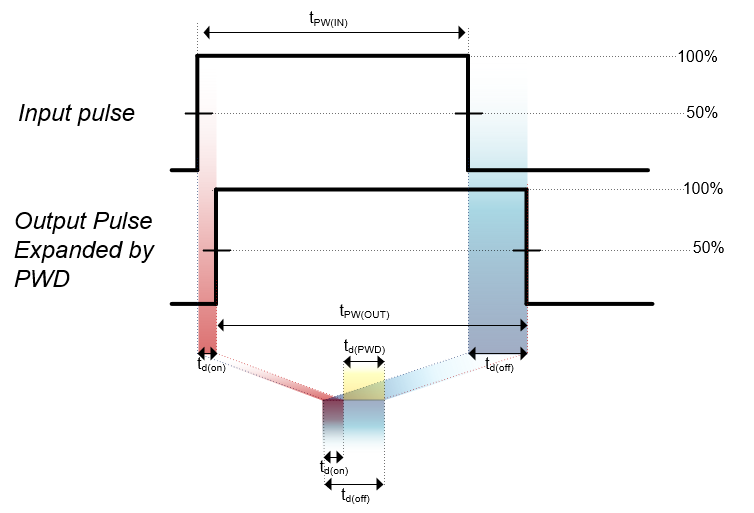SLVAF10 March 2021 TPS1H000-Q1 , TPS1H100-Q1 , TPS1H200A-Q1 , TPS1HA08-Q1 , TPS1HB08-Q1 , TPS1HB16-Q1 , TPS1HB35-Q1 , TPS1HB50-Q1 , TPS2H000-Q1 , TPS2H160-Q1 , TPS2HB16-Q1 , TPS2HB35-Q1 , TPS2HB50-Q1 , TPS4H000-Q1 , TPS4H160-Q1
3.2 Pulse-Width distortion (PWD)
Pulse-width distortion (PWD) arises from mismatch in the HSS’s ON and OFF delay times and low-high/high-low propagation delay. In Figure 3-2, the various timing parameters that need to be considered when implementing a PWM scheme with a TI high-side switch is illustrated. The timing parameters in this diagram are correlated closely to the parameters specified in the "Switching Characteristics" section of the device data sheet. In Figure 3-3, an example excerpt of the switching characterstics can be seen.
 Figure 3-2 Pulse-Width Distortion Timing
Definition
Figure 3-2 Pulse-Width Distortion Timing
Definition Figure 3-3 TPS4H000-Q1 Timing
Parameters
Figure 3-3 TPS4H000-Q1 Timing
Parameters

